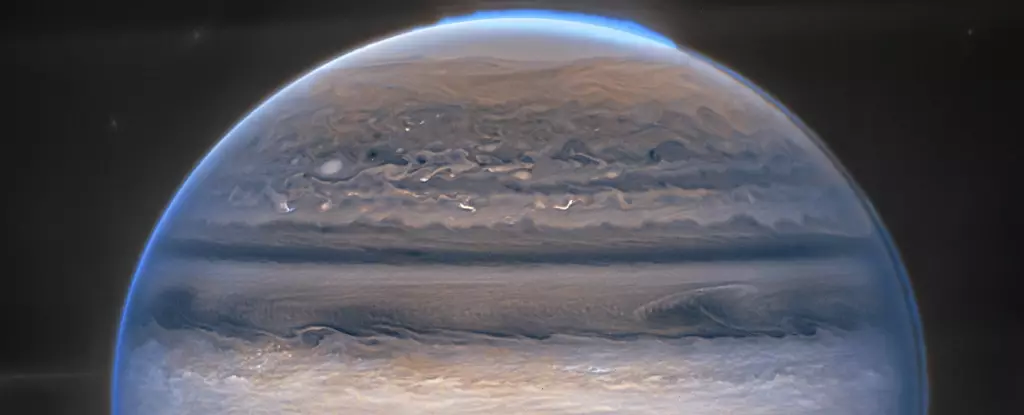Jupiter, the largest planet in our solar system, stands as a testament to the complexity and diversity of planetary bodies. Unlike the terrestrial planets—Mercury, Venus, Earth, and Mars—Jupiter is a gas giant without a solid surface, prompting myriad questions regarding its structure and the nature of its existence. This article delves into the distinctive characteristics of Jupiter, exploring the implications of its gaseous composition and the impact it has had on the solar system, including its protective role for Earth.
When contemplating Jupiter, one quickly encounters the bewildering idea of a colossal planet devoid of solid ground. Unlike Earth, which boasts various landscapes, from mountains to oceans, Jupiter consists primarily of hydrogen and helium, existing as a swirling mass of gas. The lack of a hardened surface raises questions about the planet’s form and stability. How can such an enormous structure exist without the solid foundation we associate with other celestial bodies?
As NASA’s Juno spacecraft journeys through its ninth year of orbiting Jupiter, scientists continue to unravel its secrets. Spanning over 88,846 miles (142,984 kilometers) in diameter, Jupiter’s vastness is staggering—capable of accommodating more than 1,000 Earths. Its immense scale contributes to both its complex atmospheric phenomena and the pressures that arise within its depths.
One of the most striking aspects of Jupiter is its turbulent atmosphere, characterized by violent storms and ferocious winds. Wind speeds can reach over 400 mph (about 640 kilometers per hour), a staggering rate that far exceeds even the fiercest hurricanes on Earth. The thick atmosphere, filled with clouds of ammonia, water vapor, and other compounds, generates an ever-evolving weather system. This roiling tempest creates the striking bands of colors that adorn Jupiter, a visual presentation that continues to captivate astronomers and lay observers alike.
However, the atmospheric phenomena do not merely exist for visual intrigue; they give insights into the dynamics and structure of the planet. As one descends through Jupiter’s atmosphere, the pressure increases drastically. At a depth of approximately 1,000 miles (1,600 kilometers), the gaseous hydrogen transitions into a liquid state. This transformation indicates the unique properties of hydrogen under extreme pressure, setting the stage for what may be considered one of the largest oceans in the solar system—albeit an ocean without water.
Continuing further, pressures exceed levels that are incomprehensible on Earth. The hydrogen evolves once again into a form referred to as metallic hydrogen, which only recently has been replicated in laboratories on our home planet. This exotic material is hypothesized to play a significant role in generating Jupiter’s powerful magnetic field. The transition from ordinary hydrogen gas to liquid, and then to metallic hydrogen, occurs gradually—without any abrupt changes or solid surfaces to demarcate the various states.
Ultimately, the deeper layers lead to the core of the planet, a region that remains shrouded in mystery. Scientists speculate that the core may be composed of a hot, dense metallic mixture that is neither entirely solid nor liquid. The immense pressure at these depths, estimated to be about 100 million times that of Earth’s atmosphere, presents an insurmountable barrier for any potential probes seeking to uncover Jupiter’s innermost secrets.
Jupiter’s influence extends beyond its own atmospheric phenomena; it plays a significant protective role for Earth. Its immense gravitational pull has acted as a celestial shield over billions of years, redirecting potentially catastrophic asteroids and comets away from the inner solar system. Without this protective barrier, Earth could have faced severe impacts akin to the one believed to have led to the extinction of the dinosaurs.
While Jupiter’s inhospitable environment might not support life as we know it, its moons, particularly Europa, present intriguing possibilities for extraterrestrial life. Europa is believed to harbor a vast subsurface ocean beneath its icy crust, raising hopes among scientists that life could exist there. The forthcoming NASA mission, Europa Clipper, scheduled for launch in October 2024, aims to conduct detailed flybys to study this enigmatic moon and its hidden ocean.
Jupiter is a unique and paradoxical marvel of our solar system. Its lack of a solid surface, coupled with extreme atmospheric conditions and profound gravitational influence, creates a complex interrelationship with the other planets, particularly Earth. While life on Jupiter remains an impossibility, the potential for discovering life in its moons and the protective role it plays for Earth underscores its significance. As we continue to explore and learn from this fascinating gas giant, we gain a deeper understanding of our place within the cosmos and the intricate dance of celestial bodies that surrounds us.


Leave a Reply